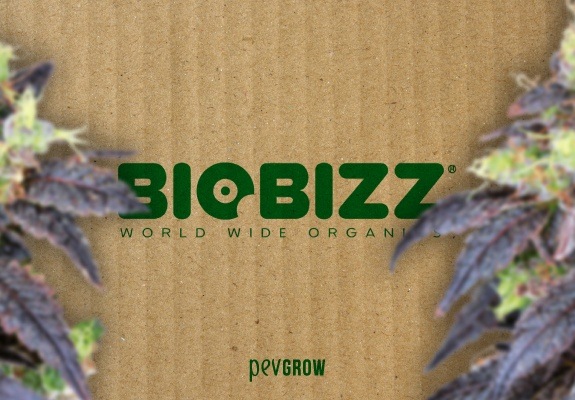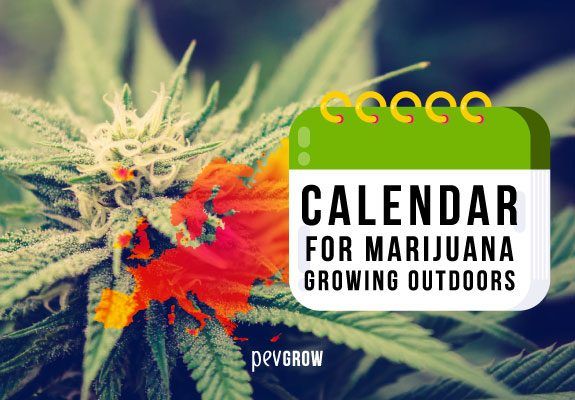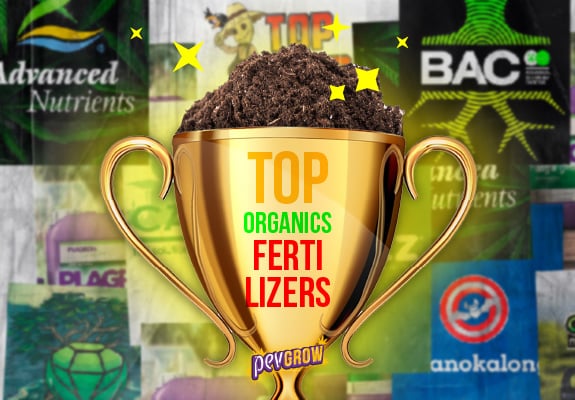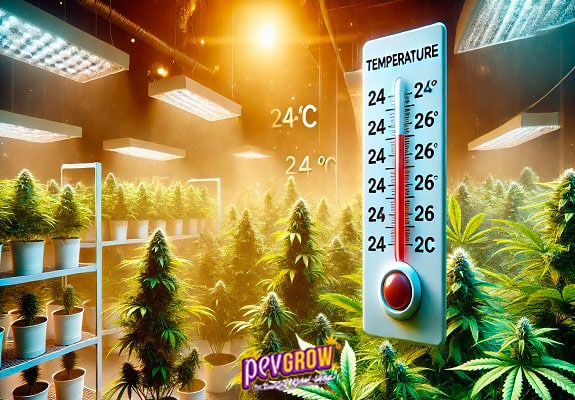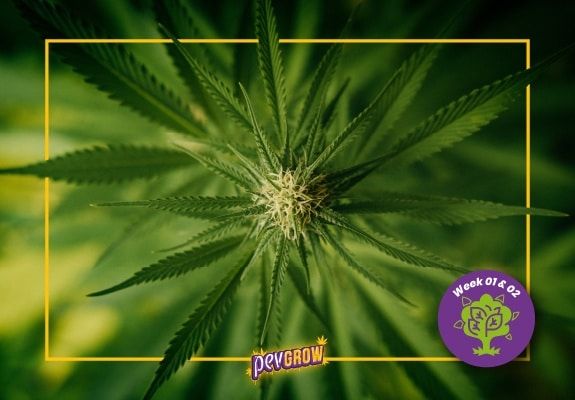

15-07-2022 09:00:44 - Updated: 15 July, 2022
The pre-flowering or first weeks of flowering of marijuana is a critical phase of cultivation, both indoors and outdoors, because at this time the plants change their metabolism, stop generating new shoots and begin to flower, so it can mean success or failure in the subsequent harvest.
–Vegetative growth phase of cannabis, everything you need to know
–Weeks 3 and 4 of cannabis flowering
–Weeks 5 and 6 of cannabis flowering
Another important topic of this phase is the change of diet, since the plants change their nutritional needs but very gradually, and if we are not careful it is possible that deficiencies or other problems appear. I imagine that you will understand the importance of this moment in the life of plants, but we are going to see everything in more detail so as not to leave loose ends that could cause losses in the harvest. In this article we are going to review the transition process between the growth cycle and the fruiting cycle, the first 2 weeks of flowering of cannabis plants.
👾 First 2 weeks of cannabis flowering, pre-flowering
Marijuana pre-flowering is the phase between the end of the vegetative growth cycle and the beginning of the actual flowering cycle. Throughout this time, the plants widen the internodal distance quite a bit because it is in that space where the pre-flowers will come out, which will gradually form the precious buds, but you have to be careful because that only happens with female plants, but males, hermaphrodites, or intersexuals may appear that if we do not know how to differentiate, it is possible that they ruin our desired harvest.
Male and female marijuana
During the first 2 weeks of the flowering phase, marijuana plants usually show their sex, and if you don’t want to produce seeds, you have to know how to differentiate the females from the rest of the plants. The difference between male and female marijuana plants is the type of flower they produce, the females show a kind of white hairs called pistils, and the males produce small balls that are the anthers of the stamens.
These flowers appear on the sepals, which are the intersections that the plants contain between the main trunk and the branches, or between the stems of the branches and the petioles of the leaves. The first flowers to appear are called preflowers, the female flowers do not yet contain calyxes, and the male flowers do not yet produce pollen sacs. There are plants that produce both female and male flowers, these plants are called hermaphrodites or intersex.
Photos of male and female marijuana
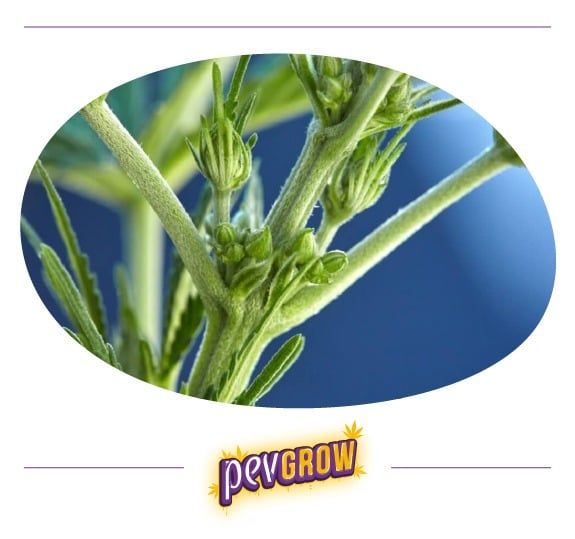
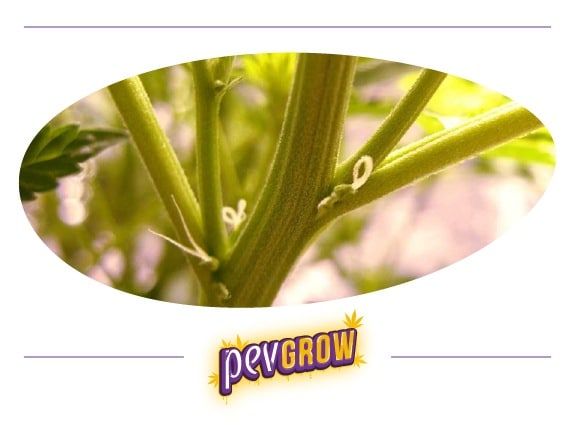
🎯 Week 1 and 2 of flowering in indoor marijuana cultivation
In indoor crops it is enough to change the photoperiod to 12 hours of light and 12 hours of darkness each day to force the plants to flower. This does not happen automatically or ipso facto, and there are varieties that can take 5 days to perceive the change, and others that need more than 1 month. That depends on the genetics of each plant, indicas begin to flower before sativas, but you have to understand that the vast majority of varieties today are polyhybrids that contain both indica and sativa genes.
It is also necessary to differentiate between seeds and cuttings, basically because the cuttings are clones identical to the mother plant from which they come, and as a general rule they are sexually mature, so they begin to flower before the seeds. Autoflowering strains change their metabolism naturally without the need to change the photoperiod, and usually start to flower after 3-4 weeks of life.
When growing cannabis indoors with full-spectrum LED lights, it is not necessary to change the lighting, but if the equipment has a potentiometer, it is advisable to increase the light intensity because in the flowering stage the plants appreciate a higher power. In the case of growing with high intensity discharge lamps such as metal halides, the ideal is to change the bulb and grow with high pressure sodium during flowering. Fluorescents can be used for the vegetative growth phase, but for flowering they need more power.
🔥 First weeks of flowering in outdoor cultivation
In outdoor cultivation or in greenhouses illuminated by the sun, all the processes are slower than indoors with artificial light, because the changes are slower and everything happens spontaneously. This phase usually coincides with summer, although it also depends on the genetics of the plants as in indoor cultivation, but it always occurs when they perceive that the nights begin to be longer than the days. During the dark period of the night, the plant accumulates a hormone called florigen that it later destroys during the illuminated period, and it is the amount of this hormone that indicates that the metabolism must be changed and start to flower.
Outdoor pre-flowering takes much longer than the 2 weeks that it can last in some indoor varieties, and the changes are much more gradual, especially in sativa varieties. To give you an idea, there are strains that need 2 months to flower indoors and outdoors it can take up to 3 months or more. But you have to understand that outdoor plants also tend to grow more than indoor ones, and although they take longer to bloom, it is often worth it because you get a larger harvest than indoors.
✅ How to pay in pre-flowering?
From Pevgrow we always recommend following the indications of the cultivation tables of the brand of fertilizers you use. However, to understand the nutritional needs during this time of marijuana flowering, you have to understand what we have talked about before, because the plants do not stop growing and start flowering instantly, so you cannot change the radical feeding.
The most important product of the pre-flowering stage is the flowering stimulator, since it is the fertilizer that is responsible for accelerating the process of change between growth and flowering. Most brands recommend starting to apply this product as soon as the flowering phase begins, but there are some flowering stimulators that begin to be used before the photoperiod change, such as Delta 9 from Cannabiogen, among others.
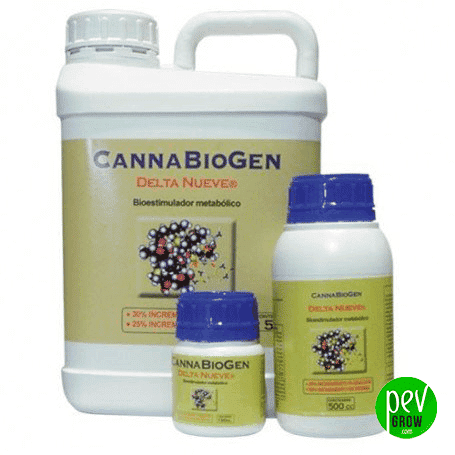
The base fertilizer for flowering usually contains NPK in different proportions, usually more phosphorus and potassium than nitrogen, unlike the one for vegetative growth, which usually contains higher proportions of nitrogen than the other two macronutrients. In full bloom the needs for phosphorus and potassium increase, but during the first 2 weeks of the flowering phase it could be said that the perfect diet would be a balanced mixture between the ideal nutrition for growth and that for flowering.
In addition to changing the diet, the amount of nutrients must also be increased as flowering progresses, increasing the E.C. and also the PH because the elements that the plant needs to a greater extent during flowering are better assimilated with a higher PH than during the vegetative phase.
🚀 Pre-flowering stage step by step
- Day 1: On the first day after the change from photoperiod to flowering, the plants remain the same because they are not yet able to perceive that they have to change their metabolism. From a nutritional point of view, we begin to apply the recommended doses in the cultivation tables, marked in week 1 of the flowering cycle. In the case of having to change the type of lighting, it is recommended to do it on this day.
- Day 2: From now on we will have to be careful to raise the focus as the plants grow, because as I told you before, now the greatest stretch will begin, and it can double in size in these first 2 weeks of the cycle. bloom. Everything else will continue the same, since the changes will not be visible yet, but I remind you of the importance of total darkness during the night period, because otherwise the plants can be stressed and delay flowering or even cause the appearance of hermaphrodites.
- Day 3: It is very important that during these first days of pre-flowering we pay attention to the lower parts of the plants and the upper shoots, in order to recognize possible nutritional problems as soon as possible. If you transplanted a few days before the photoperiod change, as we advise in our article on the vegetative growth of cannabis, you will have noticed that the plants now drink more.
- Day 4: From now on, the first changes will begin to be seen, especially in the cuttings, indica varieties, and mainly indica hybrids. The distance between nodes is widened even though the pre-flowers are not yet visible, so the plants are already beginning to prepare for the new phase. Clones of faster varieties can start showing pre-flowers from this point on.
- Day 5: It is a good time to start pruning low plants that are going to get too tall for indoor cultivation, and also when the SOG method is going to be applied. We continue to apply the recommended doses in the cultivation table, and carefully observe the plants to anticipate possible problems.
- Day 6: If you follow the crop diary that we started in the article on vegetative growth on our blog, on this day it would be time to apply phytosanitary products preventively, so if you used the insecticide last time, today it’s fungicide or vice versa. I remind you that all the products that are used in a sprayed way are given in the dark or with little light.
- Day 7: The first week of flowering has passed and now the changes are very noticeable. At this time the plants may be growing faster than during the vegetative phase, but not so much by forming new shoots, rather by stretching the internodes. This is the last day that it is recommended to apply the doses marked in week 1 of flowering of the cultivation table that you use.
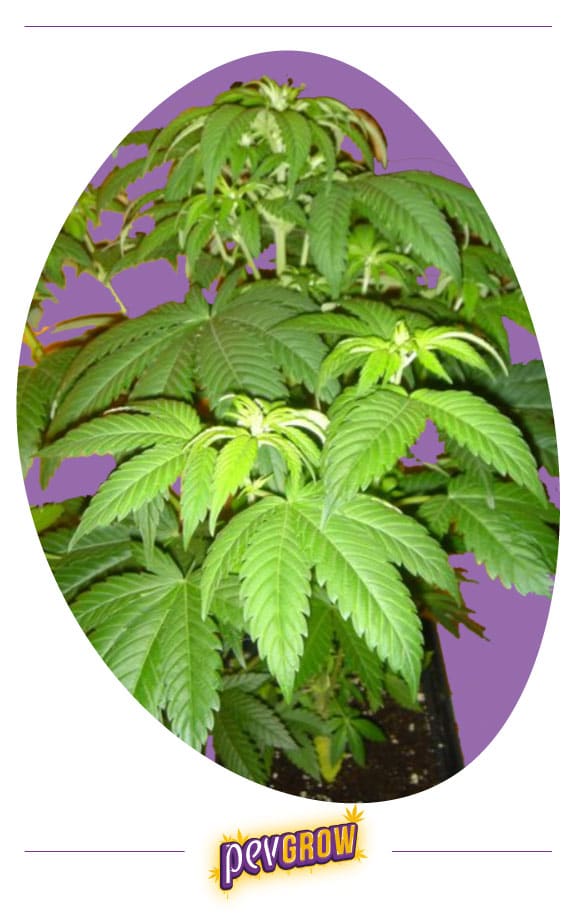
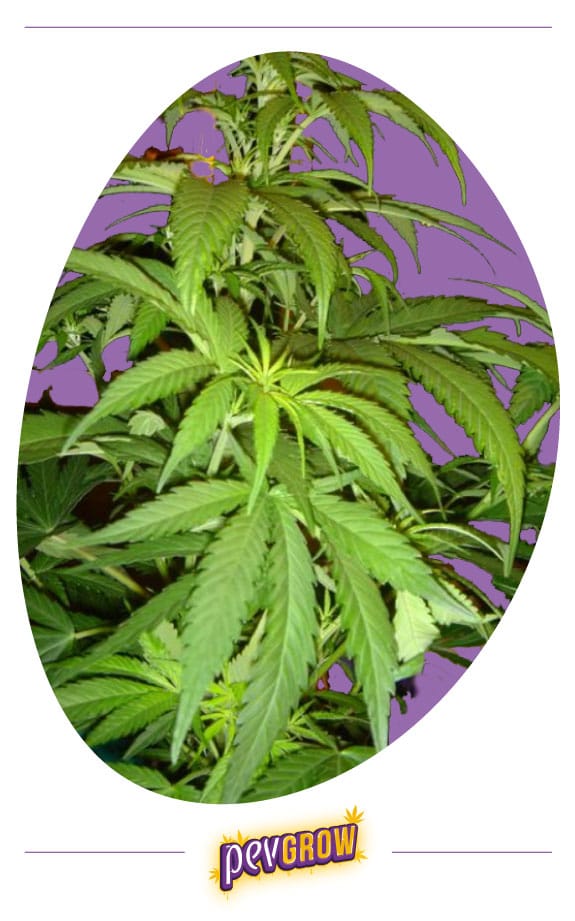
- Day 8: We start the second week of the flowering phase, and surely we will have to separate the plants so that the light penetrates well and can reflect in most of its structure. We continue to raise the focus as the plants grow, always keeping in mind that it has to be as close as possible to the plants as long as it does not exceed approximately 25º C.
- Day 9: The plants begin to assimilate a greater quantity of nutrients, and may be growing several centimeters a day, so extreme precautions must also be taken so that everything continues correctly. We continue to observe the plants to check their health status and rule out nutritional problems, pests, and other disease.
- Day 10: Indica seeds and those of mainly indica hybrids can start to show the first pre-flowers from around this time. For this reason, we will have to be careful to verify that they are all sexually stable and are of the sex we want. We continue to separate the plants as much as possible, and we can take the opportunity to see how far the light penetrates and thus decide if we do more low pruning.
- Day 11: You may have noticed that as the plants produce more plant mass, the transpiration of the plants increases and the relative humidity of the environment increases. Until now that is not a problem, but since the plants begin to flower it is recommended that the humidity be kept below 50%
- Day 12: We follow the indications of the cultivation table, but we have to be aware that these are created as a guide, so we will have to adapt them to the times and needs of the varieties we grow. Until now, it is very good to apply the marked doses in the second week of flowering, but later we will see that it is possible that the administration of some products may have to be advanced or delayed.
- Day 13: If you follow this diary from the growth phase, you will already know that on this day it is time to spray phytosanitary products, and this will be one of the last applications because soon we will no longer be able to spray anything on the plants. Despite the fact that in the first 2 weeks of flowering the plants stretch a lot, there are varieties that due to their genetics are very bushy, which are usually the indicas, and now that they should be starting to flower, it may be a good time to do a light defoliation and remove those leaves that can shade future buds.
- Day 14: We have reached the last day of the second week of flowering and if all goes well the plants should arrive at this moment totally healthy, because now the most important phase of the entire crop begins and that is when they have to give their best. themselves. Now that we have a clearer idea of what the final structure of the plants will be like, it may be a good time to put up stakes and reinforce the branches or the main trunk. In the case of growing sativa varieties or long-flowering hybrids, it may be more appropriate to repeat the indications of the cultivation table relative to week 2 for one more week, but we will see that in a future article.
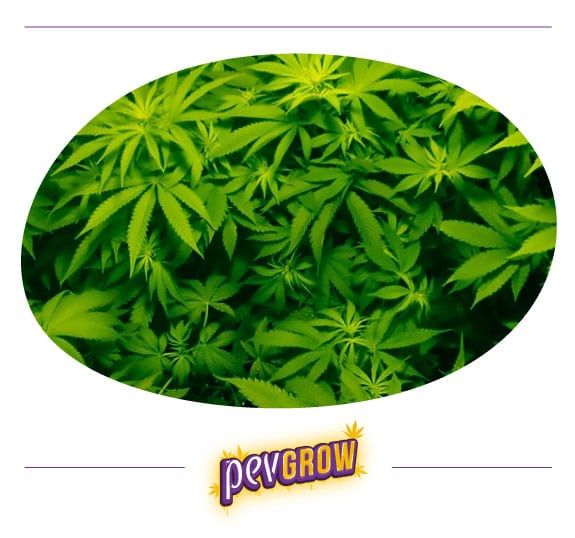
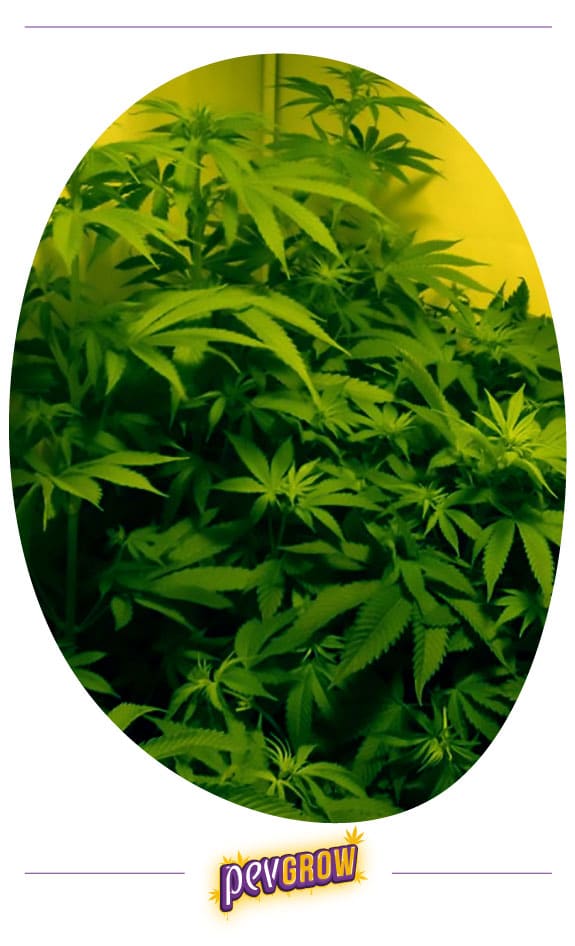
📖 Conclusion
Today we have reviewed the first 2 weeks of flowering of indoor cannabis cultivation, which also coincides with the pre-flowering phase and is very important because it represents the transition between vegetative growth and bud production. I remind you once again that all the data is indicative, and the ideal is to observe the plants well to adapt the times. In future articles we will see the following weeks of marijuana flowering, so I recommend you to be attentive so as not to miss anything.
⭐ Frequent questions
When does the flowering of marijuana begin?
All varieties do not start at the same time, and even within the same variety, earlier and later phenotypes can emerge. Flowering begins when the plants perceive that they are shortening the hours of light or increasing the hours of darkness, with the exception of autoflowering plants that are not based on light, but on their lifespan. Some people consider flowering to have begun from the moment the first pre-flowers begin to emerge, but officially it is counted from the change of photoperiod in indoor cultivation.
How long does pre-flowering last?
This also depends on the genetics of the plants, in addition to the speed of the phenotype, and even the conditions of the crop, because there can be many factors that advance or delay this phase. As a general rule, it could be said that the pre-flowering of indicas lasts around 2 weeks, that of sativas 1 month or more, and hybrids and polyhybrids between 2 and 3 weeks. We talk about seeds, because the pre-flowering of the cuttings of mother plants is shorter due to the fact that they are sexually mature.

